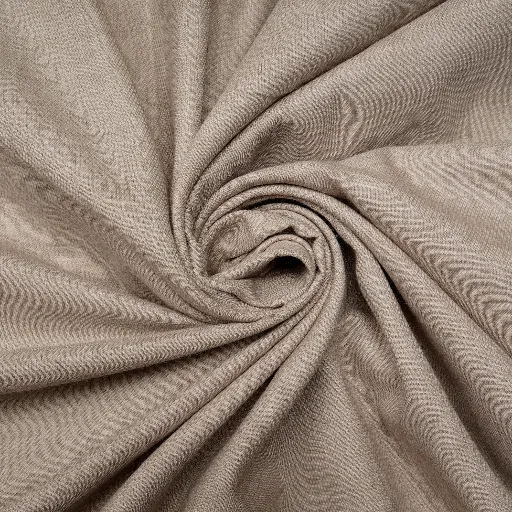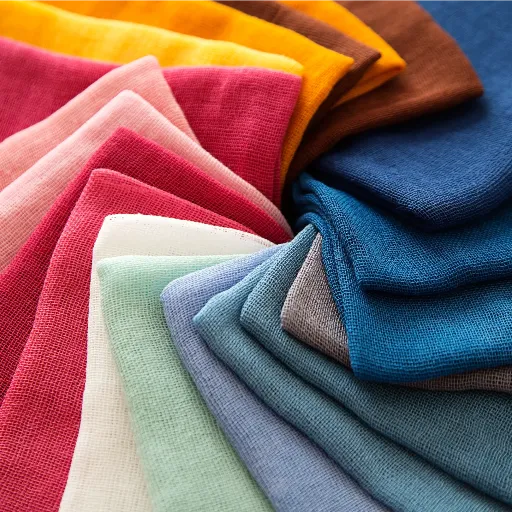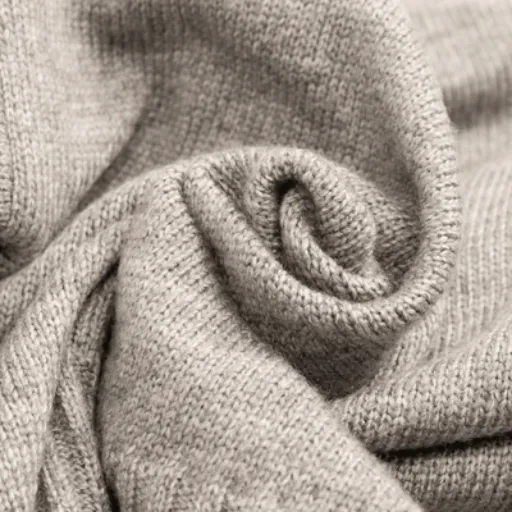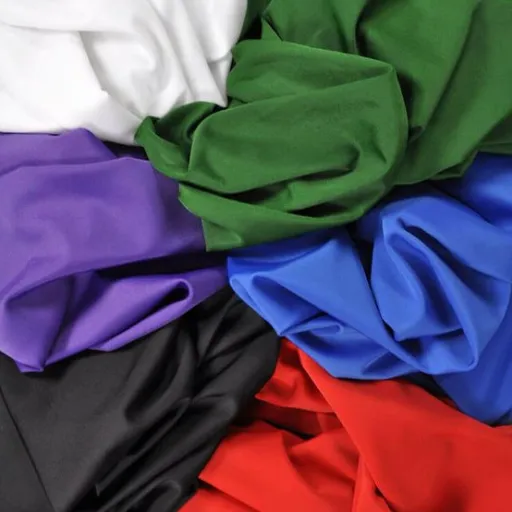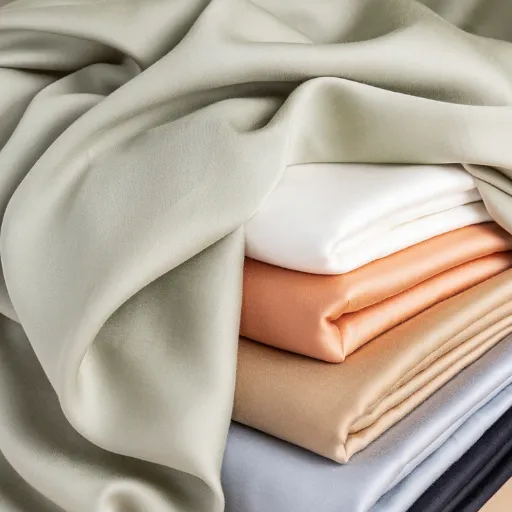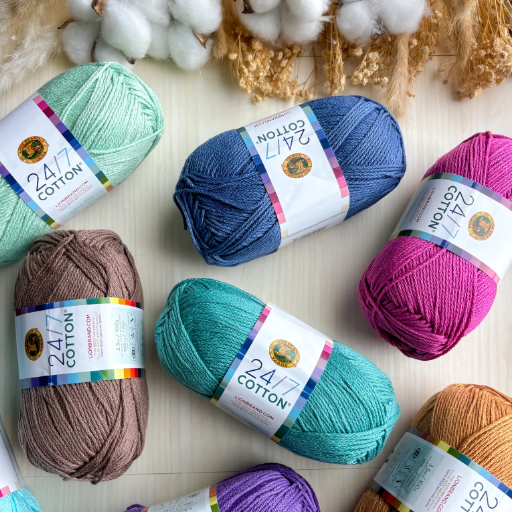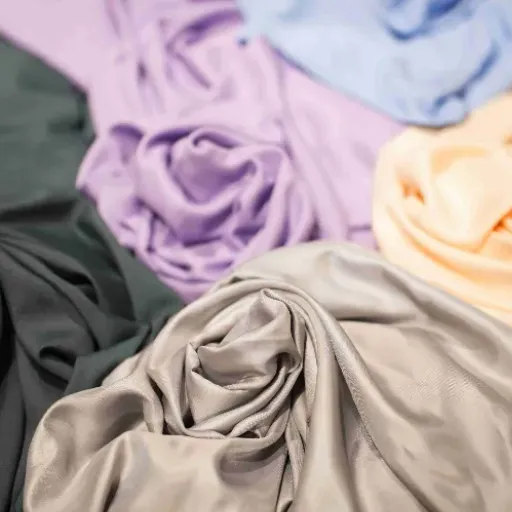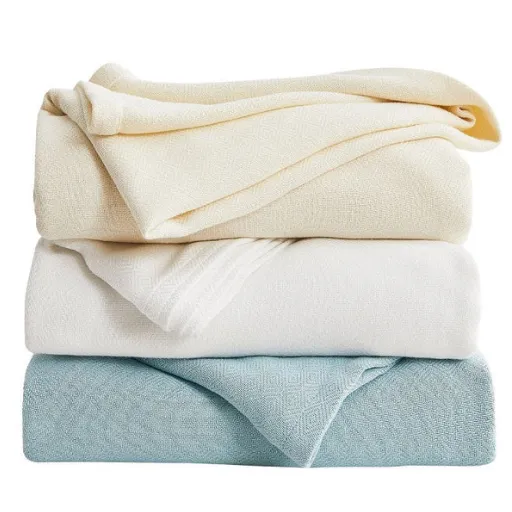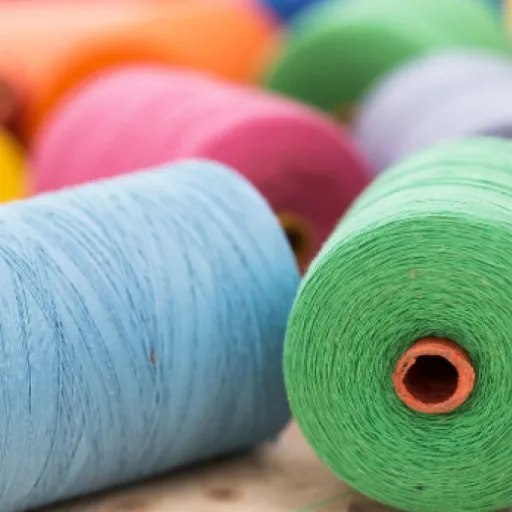Whenever the task comes up to select the most suitable fabric for particular use, synthetic materials such as acrylic and polyester are often the leading candidates. Due to their multipurpose characteristics, longevity, and the property of resembling natural fibers, these two fabrics have made their way up to the top of the textile industry. However, what differentiates them from one another? Understanding the main differences between acrylic and polyester can aid you in making a right choice, no matter if you are going to use the fabric for clothing, home furnishing, or outdoor gear. In the following conversation, we will present the characteristics, pros, and cons of each giving you the chance to look at their differences and decide which one is the better option for your particular uses. Be prepared to delve into the realm of synthetic fabrics and take bold decisions that fit your way of living.
Introduction to Synthetic Fabrics
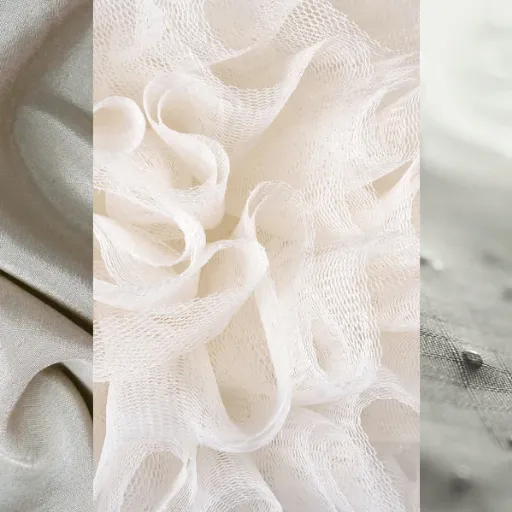
Overview of Acrylic and Polyester
Acrylic and polyester are among the top synthetic fabrics, with each having its own distinct characteristics that fit various uses. Acrylic is a material that has a wool-like feel, providing the wearer with warmth and softness, and is therefore, one of the most preferred materials for sweaters, blankets, and winter clothing. Another attractive property of acrylic is that its lightweight, non-wrinkle and color that lasts long are the other features that make it appealing. However, compared to polyester, acrylic is less durable and might suffer from pilling or lose its shape after prolonged use.
Polyester, on the contrary, is extremely durable, and its stretching, shrinking, and abrasion resistance are its main features. The fabric is very popular in sportswear, and outdoor activities, and home furnishings because of its moisture-wicking properties and easy care. Polyester is not as soft and warm as acrylic, but its high tensile strength and flexibility make it a trustworthy choice in harsh conditions.
In making a choice between acrylic and polyester, the consideration of the specific demands of your project is very important. If warmth and softness are the most important factors for clothing, then the use of acrylic is highly recommended. For fabrics that are, able to last long, performance-oriented and withstand frequent use or being outdoors, polyester is the right choice. Each fabric has its own unique benefits, which is why they are suitable for different purposes according to your requirements.
Importance of Understanding Fabric Choices
A good understanding of fabric choices is of utmost importance since the different fabrics properties have a strong effect on their functionalities and applications. The right fabric selection makes sure that the textile-based items, being it is clothing, accessories, or anything else, have the specified attributes, which could be comfort, durability, or performance.
Fabrics determine a lot of the qualities such as softness, the ability to wick moisture, and breathability, thus making an informed choice vital. For example, cotton is a common fabric choice due to its softness and breathability making it the perfect fabric for casual clothing and use in hot climates. Conversely, polyester is durable and moisture-wicking, and this goes hand in hand with the quality of activewear or outdoor use.
Wool gives one a warm winter while acrylic is the cooler and less expensive alternative to wool. It goes on to become every fabric has its special and unique features and that is matching with specific needs, thus the fabrics’ properties keep educating to be unearthed every time the fabric selection process is mentioned.
Ultimately, knowing the different fabrics’ performance will minimize the risk of losing both the longevity and the comfort of the final product. By taking time to deliberate on the requirements of the project or personal choice, individuals can easily pick the material that fits most to their lifestyle or usage situation. This not only boosts customer satisfaction but also reinforces the usability and eco-friendliness of textile goods in daily life.
Key Differences between Acrylic and Polyester
Acrylic and polyester are two synthetic fibers that have their own unique features in terms of texture, performance, and ideal applications. The differences are very important for people who intend to use them in the right way.
Origin and Composition
Acrylic is a synthetic fiber that is made from acrylonitrile and its production results in a wool-like texture making it suitable for garments that need to be knitted such as sweaters and scarves. In contrast, polyester is mainly derived from PET which is a petroleum-based polymer, and this is why it is more than just a textile for the industries.
Texture and Feel
Acrylic offers a more pleasant and warmer sensation similar to that of natural wool which makes it a good choice for winter clothing. Polyester, on the contrary, is smoother and is thus preferred for its lightweight and sleek attributes. It is also very much used in sportswear because of its property to absorb moisture and release it to the atmosphere.
Durability and Maintenance
Polyester is identified as the stronger of the two materials; in other words, it lasts longer and resists abrasion and wear better than acrylic. It is also highly resistant to UV and environmental damage, thus it becomes a material for outdoor use. Acrylic, on the other hand, though it is stronger, is more prone to pilling and it also loses its shape more quickly when the use is heavy.
Moisture-Wicking and Breathability
Acrylic is a non-breathable material that does not allow the skin to breathe; therefore, it easily traps moisture which is the cause of its rapid odoriness. Polyester on the other hand, just like a living being, quickly absorbs sweat from the skin and transfers it to the outside where it evaporates almost instantly. That is why, the material is very widely used in activewear.
Eco-Friendliness
In terms of eco-friendliness, both acrylic and polyester are not great as they both come from petrochemical resources and also they can’t be biodegraded. However, the good news is that with the advancement of recycling technology, polyester can now be extracted from plastic bottles and turned into a durable textile. Recycling of acrylic however, is still at a less prominent stage.
Cost
Acrylic is less expensive compared to polyester on average which is one of the reasons that it attracts cost-conscious consumers. However, the lower price may be linked to lower durability and performance over time when compared to polyester.
Applications
Acrylic is suitable for winter garments, blankets, carpets, and upholstery mainly because of its warmth and wool-like properties. Without its strong qualities, polyester is still a versatile fabric that has found its usage in a variety of products such as sportswear, outdoor gear, and home furnishings among others, thus covering diverse applications.
Chemical Composition and Material Science
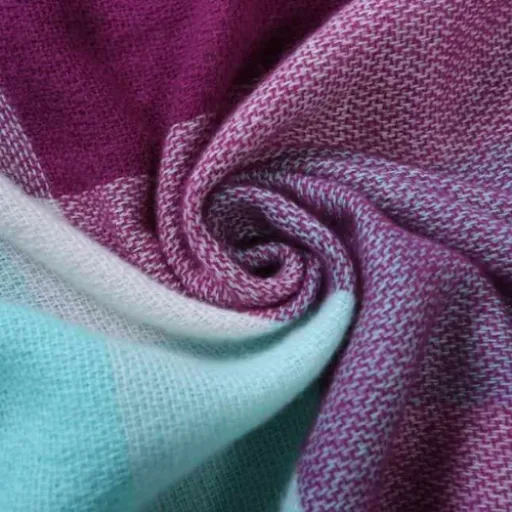
Polyester: Chemical Structure and Polymerization
Polyester is regarded as a class of polymerizates materials mainly made of the ester functional group in the main chain. Polyethylene terephthalate (PET), the polysaccharide with the highest output, is the result of a polymeric reaction between purified terephthalic acid (PTA) and ethylene glycol (EG). This polymer is obtained either through a direct esterification or a transesterification route followed by polycondensation to get high molecular weight.
The unique chemical structure of polyester leads to its excellent properties like very strong tension, resistance to stretching and shrinking, and long-lasting. It also has compact polymer chains which make it strong and resilient. The presence of aromatic rings in its backbone not only provides rigidity and thermal stability but also makes it suitable for a wide range of industrial and consumer applications. The ability to alter its chemical structure is an added advantage and thus manufacturers are able to produce customized solutions according to specific needs.
Acrylic: Composition and Fiber Structure
Acrylic fibers are synthetic fibers that are mainly composed of acrylonitrile, a monomer that is obtained from petrochemical sources. In most cases, acrylic fibers consist of at least 85% acrylonitrile units and other monomers such as vinyl acetate or methyl acrylate. The addition of these monomers enhances the dyeability, flexibility, and softness of the fiber, thus making the fiber more versatile for different applications.
The fiber structure of acrylic is a result of its polymerization method, through which acrylonitrile and other co-monomers develop long chains of molecules via a reaction called free radical polymerization. The fibers produced in this way are compact and semi-crystalline in structure, which makes them strong, resilient, and able to hold their shape after being stretched. Moreover, the structure of the fibers not only contributes to their strength but also grants them excellent moisture-wicking properties, therefore making them suitable for both active and outdoor use.
Acrylic’s remarkable composition and structure give rise to several advantages such as durability, lightness, and immunity to UV light, weather, and chemical attack. In addition to these qualities, acrylic is an excellent imitator of natural fibers like wool in terms of appearance and feel, and thus it is a favorable choice for textiles, especially for use in clothing, blankets, and upholstery. Apart from these applications, acrylic fibers are also extensively used in making outdoor fabrics, in various industrial applications, and for crafting materials, which indicates their versatility across various industries.
Comparison of Polymerization Processes
The polymerization processes are the backbone of synthetic fiber production, with polyester and acrylic being the most common ones. These methods take the monomers and convert them into polymers with long chains that form the foundation of these materials. Polyester is made by a process that is called condensation polymerization, where the monomers are connected through chemical bonds and the water created as a by-product is removed. On the other side, acrylic fibers are produced by addition polymerization which means that the monomers are linked together without any byproducts being formed. The basic difference between the two methodologies has a great impact on the properties of the fabrics made and their applications.
The world knows polyester fabric as a strong, tough and to a great extent positive in resisting cycles of shrinking and stretching. The reason for this is that condensation polymerization is the method used to make it and thus the resulting structure consists of tightly packed molecules. It’s perfectly fit for the toughness requiring applications as it is very good at activewear, home furnishing, and industrial fabrics. The fact that it consumes very little moisture and is also very high in wrinkle resistance doubles its usefulness.
Acrylic fabric made by the addition polymerization technique is famous for its wool-like softness, warmth, and lightness. It is to be found in cold-weather wear, blankets, and upholstery. Acrylic fibers are also more resistant to UV degradation than polyester, so they are more suitable for outdoor uses. Both fabrics are synthetic in origin, but their unique processes of polymerization give them contrasting features, affecting their applications and consumer preferences.
Performance Characteristics
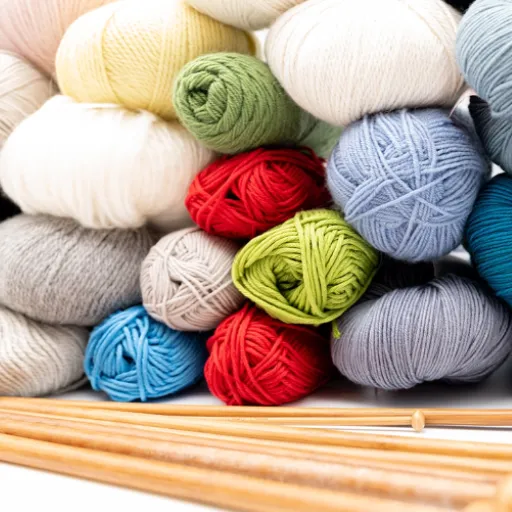
Acrylic and Polyester Fabrics Strength and Durability
Acrylic and polyester fabrics are again very different in the aspect of strength and durability. The exceptional tensile strength of polyester is such that it can stretch, tear, and be subjected to daily wear and tear without deteriorating. Thus, polyester becomes the most suitable option for such products that are frequently used or are in harsh environments, like outdoor gear, upholstery, and activewear. It is also extremely resistant to shrinking and creasing, which are its durability aspects.
Acrylic fabrics, in comparison, are less durable than polyester. They at least provide enough durability for light applications but are more susceptible to pilling and abrasion in the long run than others. Nevertheless, they possess enough toughness to be used in such places, particularly in cold climates, where acrylic fabric clothing would not only provide warmth but also be light. While not as robust as polyester, acrylic can still be used in the applications where strength is not so critical and will perform well.
In summary, polyester gives better longevity and strength than acrylic. For heavy-duty applications or exposure to tough conditions, polyester would still be the choice. On the other hand, importantly, Acrylic can still hold soft, warm products that are more comfort-oriented than high-stress use. The two fabrics are different and meet unique needs depending on the degree of durability and other performance traits required.
Elasticity and Stretch Properties
In the realm of elasticity and stretch, the performance of polyester and acrylic is miles apart. Polyester has been recognized for its superb elasticity and its capacity to return to its original shape after being stretched many times. This gives it an advantage in areas where anti-wrinkling and deforming are the main requirements. Its stretch characteristics are particularly the best in the textile industry for the production of the so-called ‘activewear’ or ‘outdoor gear’, where flexibility along with elasticity is a must and thus, durability becomes equally important.
Acrylic, the other hand, has lower elasticity than polyester. It does have some power of resistance, but not to the extent of keeping its original shape after the stretch. This situation hampers its utilization in those kinds of products where high stretch durability is a must. Still, the fact that acrylic has a soft and comfortable texture means that it is fit for making of items like sweaters or blankets, where extreme flexibility is not a big issue.
In the end, the decision of which one to use, polyester or acrylic, is determined by the very application requirements. In case the main priorities are elastic properties and structural integrity, then polyester is the best material. Conversely, in case the product is focused on comfort and warmth, then acrylic is still a good and valuable material. By knowing these distinctions, both consumers and manufacturers will be able to pick the right fabric for their needs.
Moisture Management and Breathability
In the battle of polyester versus acrylic regarding moisture management and breathability, polyester takes the crown easily. It is very well known that polyester can keep moisture away from the body and that is why it is mainly used in activewear or places where sweating is a problem. The property also makes it easy for polyester fabric to dry up really fast and thus the person using it feels dry and comfortable during sports or even in the case of humid weather.
On the contrary, acrylic fabric is not that good when it comes to moisture-wicking and breathability. Acrylic usually holds moisture close to the skin thus giving the person a feeling of being heavy or wet when he/she sweats significantly due to activities and the weather is humid. Although acrylic gives the user warmth, the downside of it is the slow and ineffective moisture management which leads to the application of acrylic being less demanding in high-performance and long-wear situations.
At the end, for situations in which moisture control and breathability are of utmost importance, polyester is the one and only choice. Still, acryl can be used for insulation and comfort applications that do not require active moisture management. Grasping these properties is a big help in making the right fabric choice based on the end usage.
Thermal Properties: Insulation and Heat Retention
Indubitably, the choice of fabric is a pivotal factor in insulation and heat retention that governs the temperature and comfort level in different situations. Blends of synthetic fibers such as polyester and acrylic show diverse thermal properties which are the basis for using these materials in different contexts. Polyester is famous for its capacity to retain heat when tightly woven and hence is a trustworthy selection for cold climates. It is an acknowledgment of the fabric’s moisture-wicking nature that keeps the wearer dry and hence warm since wetness is a factor in heat loss.
Conversely, acrylic is made to imitate the insulating qualities of natural fibers such as wool. It is very hard for a user to get cold when wearing acrylic, but neither does the user in warm-weather situations. Therefore, acrylic fibers are perfect in a variety of industries that require lightweight heating solutions. Nevertheless, due to the less porous nature of acrylic, it gets to be less breathable than polyester which could consequently lead to overheating or discomfort in cases of heavy use or hot weather. Regardless of such a downside, the material cuddles and gives off warmth so that it can serve well in cozy, low-activity, or as part of a layered clothing system.
In the end, polyester and acrylic are to be chosen according to the intended use and the environmental factors. Definitely, polyester will be the best choice for those situations where the use is active or moisture control is a priority, while acrylic will be the perfect option for scenarios where there is a demand for superior warmth and comfort with no activity or minimal activity. Once these differences are recognized, automatically the right material for best thermal performance and user satisfaction is going to be selected.
Environmental Impact of Polyester and Acrylic Fabrics
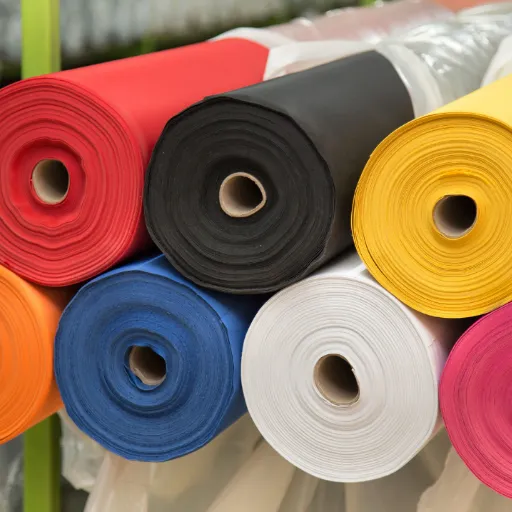
Energy Consumption in Production
The environmental impact of polyester and acrylic fabrics is largely due to the high energy consumption involved in their production. Since the polyester production process is based on petroleum, it further includes energy-consuming stages like polymerization and extrusion. This is the reason that the process emits a large amount of greenhouse gases and consumes more resources than natural fibers do.
Generally, the production of acrylic fabric is based on a similar source of synthetic polymers but it still requires a bit less energy than polyester to produce. But still, it requires large energy amounts owing to chemical and mechanical manufacturing processes. Plus, the eco-unfriendliness of acrylic is further increased as, like polyester, it is derived from non-renewable resources.
One of the main steps towards reducing the energy consumption in these fabrics is the use of recycled polyester and the limitation of the virgin materials that are used. The energy consumed by the recovered options is far less than the energy required for making new polyester from raw petroleum. At the same time, the use of advances in renewable energy technology in manufacturing facilities could lead to a significant reduction in the carbon footprint of both polyester and acrylic production. Nevertheless, companies that are trying to produce sustainable products will still rely heavily on consumer consciousness and choices.
Water Usage and Pollution Concerns
The water consumption and pollution issues connected with the polyester and acrylic fabric production are rather heavy. The same large volume of water is normally used during the whole process of dyeing and finishing and consequently, large volumes of water are very often squandered, i.e. leaked, not treated properly, etc., leading to wastewater discharge into the rivers, lakes, and oceans contaminated with dyes, chemicals, and heavy metals. The whole situation hurts ecosystems, poses a threat to and death of aquatic life and poses human communities that depend on the water sources at risk too.
Moreover, washing polyester and acrylic textiles releases microplastic fibers which are considered the biggest growing threat. The very tiny particles of plastic are not captured by normal wastewater treatment plants and most of them end up in rivers, lakes, and oceans. Gradually, microplastics build up in the sea and they can be eaten by fish and eventually the humans might be affected through the food chain and health impacts.
In order to mitigate the above-mentioned concerns, the industry must apply more sustainable practices such as setting up closed-loop water systems that recycle and purify water, stricter wastewater treatment measures, and research into synthetic fibers that are less harmful to the environment. Cooperation among manufacturers, policymakers, and consumers will be a vital factor in reducing water pollution and thus making a more sustainable future for textile production.
Microplastic Shedding and Its Effects
Microplastic shedding denotes the process of discharging tiny plastic particles, generally not larger than 5mm, during the washing of synthetic fabrics like polyester, nylon, and acrylic. These microplastics come off fabrics as clothes go through the cycles of wearing, washing, and friction. Once they are detached, these particles can go out through the wastewater systems and finally reach the rivers, oceans, and other habitats, thus becoming a major environmental problem.
The impact of microplastic pollution is both extensive and alarming. The first thing that comes to mind is that the plastic particles make the marine environments dirty, where they become the food of aquatic organisms, and thus, the health issues – which are already there in the animals- spread up to the food chain. According to studies, microplastics can block the intestines, lead to the dysfunction of the affected organisms, and, in some cases, even cause the transfer of poisonous substances to animals through their diet. Such contamination not only affects fish, for example, but also us humans since in the end seafood or even water containing these particles is the source of the health problem.
Tackling microplastic shedding will involve the joint efforts of the industries, governments, and consumers. The textile industry has to go for the innovation path and develop new materials that have a much less shedding rate, while the public authorities can place strict standards on the filtering systems used in sewage treatment plants that discharge wastewater into the rivers and seas. Consumers can play a significant role by reducing the number of times synthetic clothing is washed, investing in special laundry filters, or buying clothes made from natural or environmentally friendly materials.All these different strategies have to be put together and used to prevent the release of microplastics and keep both the environment and the people healthy.
End-of-Life Solutions: Recycling and Disposal
Recycling of materials is a large part of the waste disposal process which includes textiles and plastic to the least extent. The recycling comprises numerous processes treated on various materials to make them reusable thus cutting down on the resources needed for the first time and at the same time minimizing the landfill. For instance, the recycling of textiles may involve giving away clothes that can still be worn, changing the fabric into a new product, or getting the fibers back for industrial use. Plastics can be treated the same way, they can be cleaned and sorted and then produced through the pellet process into new items thus saving resources and reducing pollution.
Another critical point is the proper disposal methods when recycling is not an available option. The non-recyclable materials should be taken to the facilities that are expressly designed for the safe handling of such wastes like the landfills which are equipped to prevent leaching or incinerators that less emit harmful emissions. Also, hazardous waste such as electronic waste and chemicals must be disposed of at specialized facilities to avoid contamination of soil and water. The public has to be educated on proper disposal practices and this may significantly boost the efforts made.
The collaboration of people, industries, and governments can also be a great factor in the recycling and disposal systems. The government can ensure that there are regulations to encourage production and waste management that are friendly to the environment, while companies can pour money in the research of new recycling techniques. On the level of a single person, adopting proper waste sorting habits and reducing personal consumption are also contributions to the environment being in a healthier condition. Such collective actions are essential in the process of closing the loop and assuring the sustainability of the future.
Applications of Acrylic and Polyester Fabrics
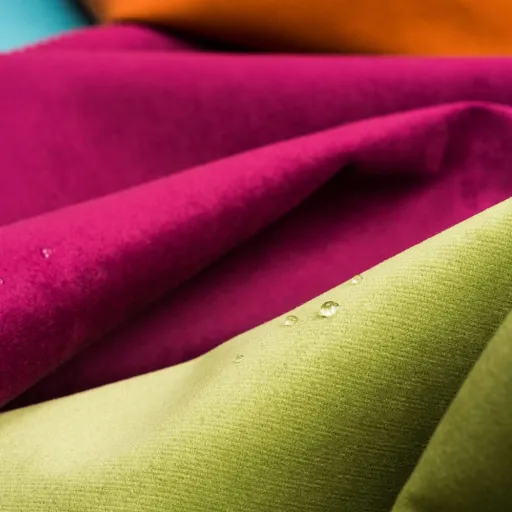
Use in the Apparel and Fashion Industry
Acrylic and polyester fabrics have come to be synonymous with the clothing and fashion industry notably because of their quality, multi-purpose ability, and cost savings. Among several knits that include sweaters, scarves, and gloves, the acrylic fabric is often the favorite for its wool-like touch, great thermal insulation, and superb dyeing capacity. So, these fabrics are light, soft, and easy to dye, which is a reason for their popularity as a supplier of vibrant and comfortable clothing.
Polyester, in contrast, is one of the mainstays of the fashion industry because of its strength and its properties of being wrinkles, shrinking-resistant, and stretching-resistant. The same attributes open up a range of applications for the fabric, from activewear and outerwear to casual outfits. Plus, its moisture-wicking property is very useful for sportswear; it provides users with a dry and comfortable feeling during exercise. The textile is frequently mixed with cotton and other natural fibers to offer a combination of comfort and increased strength.
In addition, both the fabrics acryl and polyester are easy to care for and relatively cheap, which makes them available for both the industry and the customers. They are not only easy to wash but also quick to dry and very durable, thus, they are ideal for daily wear. Nevertheless, synthetic garments still have to deal with the issue of being non-biodegradable which further highlights the adoption of green practices in the fashion segment to lessen the ecological footprint of these textiles.
Home Textiles: Upholstery and Bedding
Upholstery and bedding materials in home textiles are functional and aesthetic at the same time. So, the first function of upholstery fabrics is to cover furniture like sofas, chairs, and ottomans, and the second is to enhance the durability and visual appeal of these pieces of furniture. These fabrics, being such an important part of furniture, are made from the most varying of materials like cotton, linen, synthetic blends, and leather, which have their very own unique properties such as softness, resilience, and stain resistance. Additionally, bedding materials are usually cotton, polyester, and silk, which are favored for their good airflow and comfort properties.
The selection of materials for home textiles is of utmost importance in ensuring longevity and user satisfaction. For curtains, the fabrics should be of high abrasion resistance and easy to clean as they get a lot of wear and tear from children or pets in the house. However, in the case of bedding, the features mentioned above are not only for the consumer’s comfort but also for the promotion of healthy sleep, hence the use of hypoallergenic and moisture-wicking properties. The latest trends point out sustainability as a major factor, leading to the selection of recycled or eco-friendly materials.
Textile technology has made remarkable advances that have influenced the home textiles market as well. For example, the application of stain-resistant treatments, antimicrobial finishes, and temperature-regulating fabrics is gaining more and more popularity in the industry. These innovations, besides extending the life span of the textiles, have also contributed to their being more multifunctional. So, it cannot be denied that the modern home environment is shaped been by the evolution of upholstery and bedding products, which continuously align with consumers’ demands for both practicality and sustainability.
Industrial Applications and Technical Textiles
Technical textiles have transformed the industrial sector in many ways by introducing new materials that are able to perform different functions. These fabrics are made for the industry with the specific functionalities and not just for aesthetic or decorative purposes. They are characterized by properties such as strength, durability, and resistance to very harsh environments. Technical textiles are being used in construction, transportation and all other sectors to make the operation both safer and more efficient. For instance, geotextiles are applied in the construction sector to stabilize the soil, and industrial filters made of special textiles are inextricably linked with air and water quality control.
One more place where technical textiles make a great contribution is the automotive and aerospace industries. In those areas, production of modern devices, which are light yet strong, are heavily dependent on these fabrics. The use of composites and reinforced fabrics not only had its voice in lowering the fuel consumption but also made all possible through decreasing the weight of vehicles and airplanes. Moreover, technical textiles are very commonly found in the manufacture of protective and safety gear, like airbags and seatbelts, ensuring comfort and safety for the user and at the same time ,maintaining the highest performance standards.
The medical industry is another sector that receives a substantial benefit from technical textiles. They are involved in patient health management and care from surgical gowns and implants to wound dressings and hygiene products. The creation of sterile and biocompatible materials has been the primary reason for the rapid development of medical technology, which, in turn, has had a positive impact on the health outcomes of patients. As manufacturers keep on innovating, technical materials will not only be used more widely but also become the main suppliers of solutions to the complex needs of different industries across the globe.
Frequently Asked Questions (FAQ)
Q: What are the main differences between acrylic and polyester fabrics?
A: The differences between acrylic and polyester fabrics can be identified mainly in terms of the source and the characteristics of the fabrics. The process of making acrylic involves the utilization of synthetic fibers produced from acrylic acid, while the polyester textile is made from polyethylene terephthalate which is a petroleum-based synthetic fabric. Acrylic is generally softer and has qualities similar to those of wool thus it is used mainly for making clothes and blankets. On the other hand, polyester is recognized for its longevity and toughness against force and abrasion so it is most suitable for such things as outdoor equipment due to its properties.
Q: Is acrylic fabric more breathable than polyester?
A: In most cases, polyester is less breathable than natural fibers such as cotton or wool, but acrylic can also be less breathable than those fibers. Both types of fabric tend to keep heat, so they might be less appropriate for hot summer days unless they are specifically made to be breathable. When summer is the season to choose the fabric, keep in mind that the acrylic may overheat if it is worn in thick layers.
Q: Is it permissible to use acrylic and polyester fibers together?
A: Yes, there is a variety of fabrics that consist of a blend of acrylic and polyester fibers along with other types of fibers as well since these materials together will have the best properties. When it comes to color durability, moisture-wicking property and so on this blend will be the best fabric for various uses including everyday use, sportswear and even outdoor clothes.
Q: What is the environmental cost of polyester production?
A: The main resource for polyester is crude oil which is the most common raw material for the petroleum industry and this causes carbon dioxide (the most important greenhouse gas) emissions. In addition, the fibres made from petroleum as in polyester textiles can contribute to plastic pollution of the oceans via microplastics that get released from washing these clothes. Using recycled polyester can somewhat lessen these impacts on the environment.
Q: Which fabric is better for outdoor use: acrylic or polyester?
A: Both fabrics can be used for outdoor gear but polyester is preferred due to its durability and moisture-wicking properties. The acrylic fabric feels softer but is still not as strong as the polyester in terms of wear and tear resistance. Therefore, it is better to choose polyester for outdoor activities because of its exceptional durability.
Q: Is acrylic fabric appropriate for summer?
A: Acrylic fabric is summer-friendly depending on the style and thickness of the material used. A light acrylic yarn can be just warm enough for summer, while a thick acrylic T-shirt may feel hurting due to the body accumulating heat. Always check for fabric weight and weave pattern while buying summer.
Q: At what level does the color retention of acrylic compare with that of polyester?
A: The two fabrics retain colors excellently, but polyester claims to be the winner as it is especially appreciated for its qualities of holding bright colors over time. Fading of the polyester materials after washing is less likely than that of some of the acrylic ones. Thus polyester becomes a preference for clothing to last for a long time.
Q: What do I need to keep in mind when deciding if I want my clothes made from polyester or acrylic?
A: The decision to be made is between acrylic and polyester which requires an analysis of the characteristics like softness, durability and the purpose for which the fabric will be used. Acrylic will be the choice whenever warmth is needed for sweaters, as it is softer, while polyester will be preferred in activewear and outdoor clothing areas for its durability and moisture-wicking capability. Judging your closet’s needs will lead you to the right fabric.
Q: Is recycling of acrylic fabrics an option?
A: Acrylic fabrics have poor recycling compared to polyester since the latter can be made from recycled raw materials. However, a few initiatives capable of recycling acrylic fibers are being taken. The best is to confirm with the recycling programs in your area if they accept acrylic items and then look for ways to reduce waste in your fabric choices.
References
-
Textile Yarn Blog: Understanding the Key Differences Between Polyester and Acrylic – This source provides a detailed comparison of the two fabrics, including their advantages and long-term reliability.
-
Big Z Fabric Blog: Two Common Fabrics, Acrylic Vs Polyester – Offers insights into the properties, environmental impact, and potential skin irritation caused by these fabrics.
-
Reddit Discussion: Acrylic vs Cotton vs Polyester – A community discussion that highlights practical experiences with polyester and acrylic, including their softness and durability.








